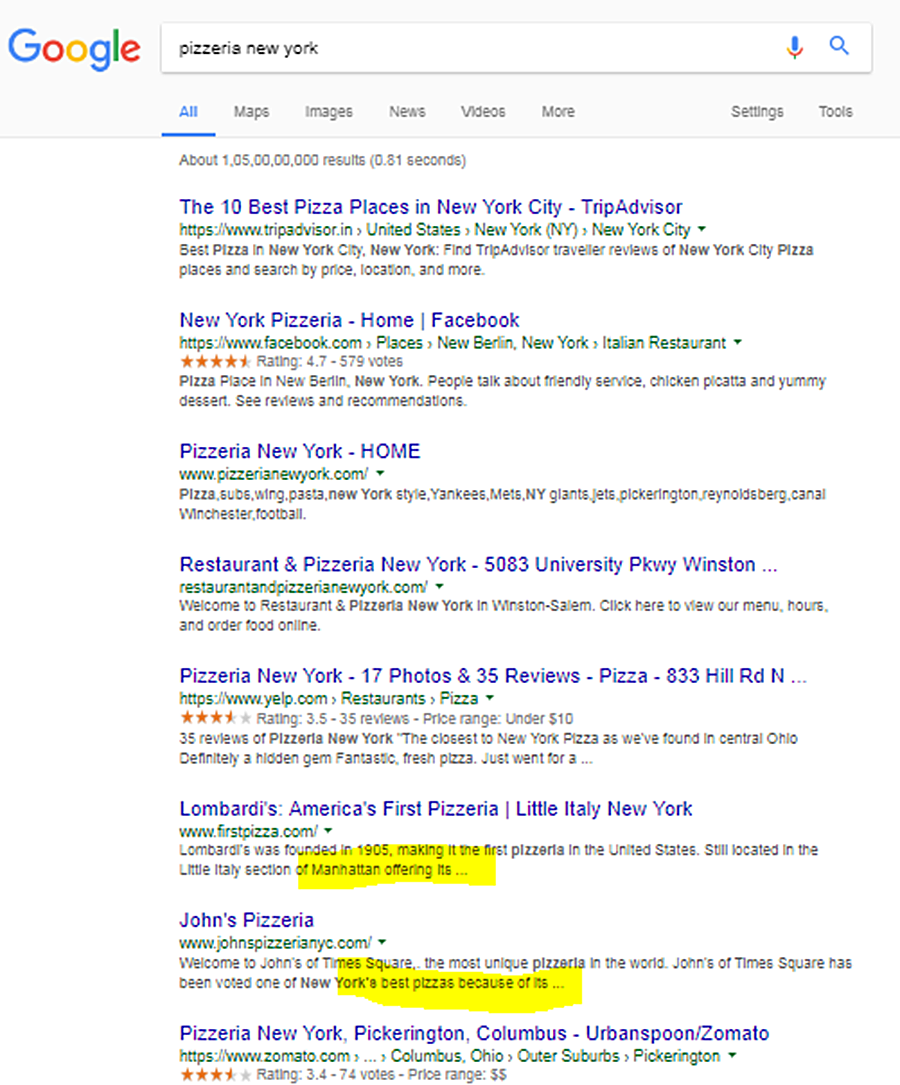
Nov 21 The Complete Guide to Dominating Local Search Optimization in 2018
We get asked a lot about being found online locally and realized that it’s a never-ending workout- Here are some ideas to help you as you go into 2018. Thanks to Guy Sheetrit.

SEO keeps on changing and there is just one rule to remember: grow with it.
As digital marketers and SEO experts enter the final stretch of 2017, the biggest question confronting them is what does 2018 have in store for local SEO, the most viable channel of interest for local business owners? Here is how to can dominate local SEO in 2018.
1. Local citations: You just can’t have enough of them.
A Google research recently revealed that four out of five users trust search engines for local searches. This makes local SEO a high stakes affair for local businesses. The best way to give your local business clear visibility on SERPs is to create content rich pages on business directories. Here are some best practices:
Get your Google My Business listing and get the Google Maps Marketing done right.
Make a list of the top 10 business directories and build an engaging, content-rich business profiles on each of them. Begin with Yelp, Merchant Circle and Citysearch.
Look for the top 10 local business directories next and add your profiles there.
If the Chamber of Commerce or equivalent agency has a page for your city; list your business there. Repeat this for any popular local newspaper websites you come across.
Next, search for “[city name] directory and find if you missed any directories.
Also, look for category specific directories, such as OpenTable and Zomato for restaurants, Viator and TripAdvisor for art galleries and touristy spots, etc.
Lastly, make sure that your business’ name, address and phone number (NAP) is consistent (not even a comma’s difference is allowed!). Any discrepancies might cause Google to NOT show your business’ information on a search result page.
The number, accuracy and quality of your business’ local citations improve its chances of featuring highly in search results; check out this Moz guide to understand more about local citations.
2. Leverage user reviews and ratings.
Positive reviews are an important local SEO ranking factor that improves your business visibility on Google. Google values the languages consumers use. A customer review is 100 percent user-generated content that powerfully boosts long-tail keyword traffic. Google trusts specific third party review websites and requires you to have 150 unique reviews in the past year, with an average rating of at least 3.5 out of five, to include your results on the SERP.
Enable your positive reviews and five-star ratings to be visible on SERPs; go to Google Developers Structured Data and enable Rich Snippets. Plus, make some time to go through this SearchEngineWatch guide on using reviews and ratings as a driver for local SEO success.
3. Raise your schema markup game.
Schema markup has been on the radar of SEO experts for some time now. Now’s the time for any local business to raise its schema game. Add structured data markup in your website’s code to include vital business information for Google to find and showcase. Use Google’s Structured Data Testing tool to identify possible errors in your website’s code and fix them.
Beyond the basics, look for schema markup tags that help your business differentiate. Voice Search is on the surge and will continue to dominate in terms of global search numbers in 2018. To be a part of the party, make sure your business website uses structured data markup to the extent that any voice like ‘the best rooftop bar around me’ shows your bar in the top three results.
As of now, less than 50 percent of websites use local schema markup for local SEO, so there’s tremendous advantage to be enjoyed by adopting it. Use it before it ceases to be an enabler of competitive advantage.
4. Get the basics right: Title and meta descriptions
As much as it’s important to try out new things and experiment with SEO, one thing remains constant — the importance of title and meta tags. Treat them as a mini advertisement for your web pages.
In 2016, Google increased the width of the main search results area to 600 px. Keeping this in mind, you’d do well to target for title tags within 55 to 60 characters. For meta descriptions, keep it between 180 and 200 characters.
Don’t commit the cardinal sin of letting dots ruin your page descriptions. Here’s an example of how it’s not done! Descriptions of both the pizzerias (highlighted in yellow), miraculously, disappear when the impact words were supposed to come!
Here are a couple of useful tools to double check how your title and meta tags appear on Google — Yoast’s SEO Plugin for WordPress, and SEOmofo.
Turns out, if Lombardi’s SEO guy had used SEOmofo, he/she would have identified the problem.
So that you don’t do such a mistake, I recommend you give a quick read to Hubspot’s guide to writing title and meta descriptions.
Final Words
Local SEO is, inarguably, the best bet for local businesses to grow big. With the tips and tricks presented in the guide, you can be sure that your business website will be ready to rock throughout 2018 as well.
https://www.entrepreneur.com/article/302443
On – 16 Nov, 2017 By Guy Sheetrit




Sorry, the comment form is closed at this time.